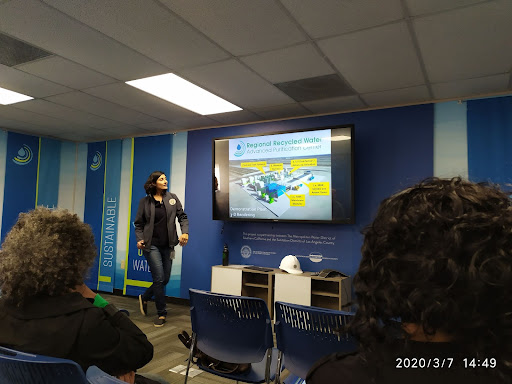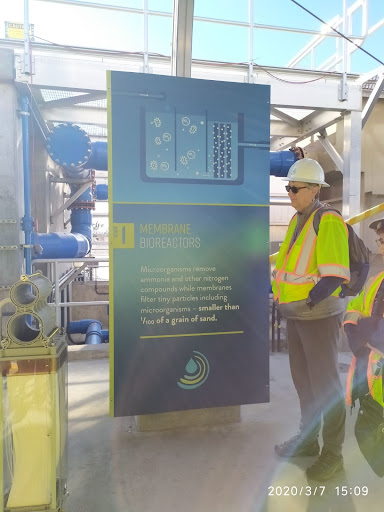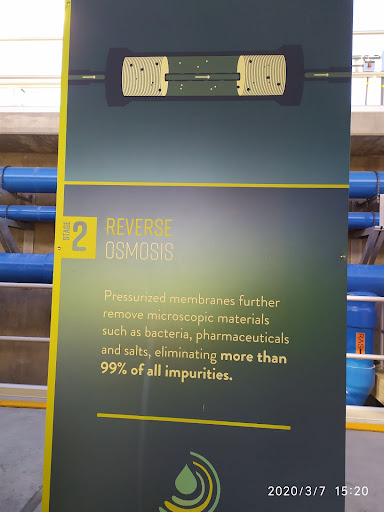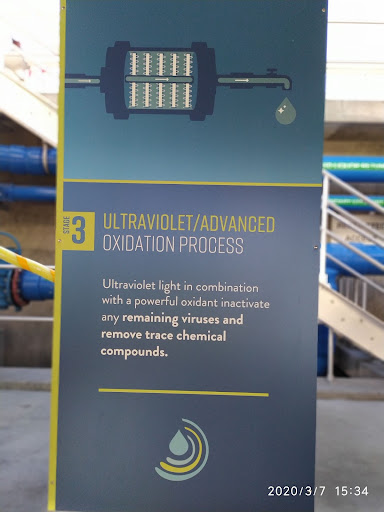By Tom Williams
How Gross is Your Tap Water?
A silly question and yet a significant concern worldwide: it’s time to have a serious discussion about reclaimed waters.
We are at the end of the snow drought, in the Sierra and Rockies, and as usual, we have come back to the same old issue, where can we get more water and how much will it cost? Users in the Los Angeles Department of Water and Power (LADWP) service area showed that they could conserve water by 20% in a matter of a few months, but everyone says we can’t solve all the water problems by conservation only, and I agree.

Water Committee visits MWD Pilot Facility – Pure Water Southern CA by Charming Evelyn
One obvious source? Recycled, or reclaimed water. The EPA defines recycled water as: Water reuse (also commonly known as water recycling or water reclamation) reclaims water from a variety of sources then treats and reuses it for beneficial purposes such as agriculture and irrigation, potable water supplies, groundwater replenishment, industrial processes, and environmental restoration.
Over 50 years ago Orange County(‘Water Factory 21) first put recycled water to use as groundwater barriers, where 50% went to the sea and 50% went to their wells feeding into the potable water supply (Reclaimed-2 Ground-2 Tap). Second, for almost 50 years, the Monterey Bay Regional Wastewater Treatment Plant (MBRWTP) produced safe reclaimed water for irrigating directly edible crops (Reclaimed-2 Irrigation-2 Tap) and now may provide water supply wells (Reclaimed-2 Irrigation- 2 Ground-2 Tap). Both projects had/ have strict biological and water quality monitoring, and MBRWTP had viral monitoring for over one year and found none 40 years ago.
What about treated wastewater already pumped into the L.A. region? Many think that collecting advanced treated (purified) wastewater effluent from Hyperion rather than discharging it to the ocean is not good stewardship of said water. I agree, but what will we do? Many other people have expressed disgust, a.k.a. The Yuck Factor, at the very idea of Toilet-to-Tap (T2T, but it is actually Toilet to Treatment to Tap, T2T2T, but short form Reclaimed toTap, R2T), while Orange and Monterey Counties have been 40+years leaders in the recycling of reclaimed water in California (Reclaimed-2 Ground-2 Tap or Reclaimed-2 Irrigation-2 Table). Other cities have gone the Reclaimed to tap route either directly or indirectly.
The bottom line is that many others have to use water they can get; others don’t have our California luxuries and financial resources to transport water from 100’s of miles and neither do they have a very strict Department of Public Health which has restricted any reclaimed use of groundwater recharge and remote irrigation without any demonstrated public health effects and with demonstrated safe uses for more than 30 years at many facilities. However, all of this will change with the new report from the Expert Panel. “The Expert Panel has submitted the final memo on Expert Panel Preliminary Findings and Recommendations on Draft DPR Criteria and found that “the Early Draft of Anticipated Criteria for Direct Potable Reuse dated August 17, 2021, adequately protects public health.” (CA WaterBoard)
For Los Angeles, we can further reduce irrigation through conservation and protect the Delta. Looking at L.A’s flows, I noticed that the total sewage for the Department of Public Works (DPW) was only about 70% of the DWP water supply; the remainder goes to ground leakage and for irrigation. Usual sewage return would be 90% from the water supply. This is why it was so easy to reduce water by 20+% in 90 days; we are still further reducing through conservation.
All treated reclaimed and stormwater waters can be recharged in the San Fernando Valley Aquifer and South/West LA groundwaters. Recovery/reuse of Reclaimed -2 Ground-2 Tap is the easiest and cheapest water we can get for potable uses, but this may not be enough. We must get better with the land left and protect underground reservoirs for effective recharge and recovery, Therefore although both stormwater and reclaimed water can be recharged and used in the Valley and Central/West basins, we need to begin the cycling of treated wastewater back to the potable supply system as many others have already proven can be done. We need to: ‘Find Globally, Act Locally.’
This can apply here as L.A. City/SoCal water users can achieve a ‘Blue L.A.’ by 2030 with all San Fernando Valley reclaimed water/ stormwater flows for recharge, groundwater wells and reuse. Recharge 100% of Hyperion Purified Effluent to SF Valley and Ballona Basin, South of Broadway/Sunset – 100% of new developments with 100% stormwater recharge caissons/wells for Central and West Basins, 100% of Hyperion sewage flows with potable treatment and reuse south of Sylmar.
Dr. Tom Williams is a long-time member of the Water Committee and heads up the Technical sub-committee for Sierra Club CA Water Committee.
3 Steps of Water Purification

Step 1 – Membrane Bioreactors. Microorganisms remove ammonia and other nitrogen compounds while membranes filter tiny particles, including microorganisms.

Step 2 – Reverse Osmosis. Pressurized membranes further remove microscopic materials such as bacteria, pharmaceuticals, and salts, eliminating more than 99% of all impurities.

Step 3 – Ultraviolet/Advanced Oxidation Process. Ultraviolet light in combination with a powerful oxidant inactivate any remaining viruses and remove trace chemical compounds
